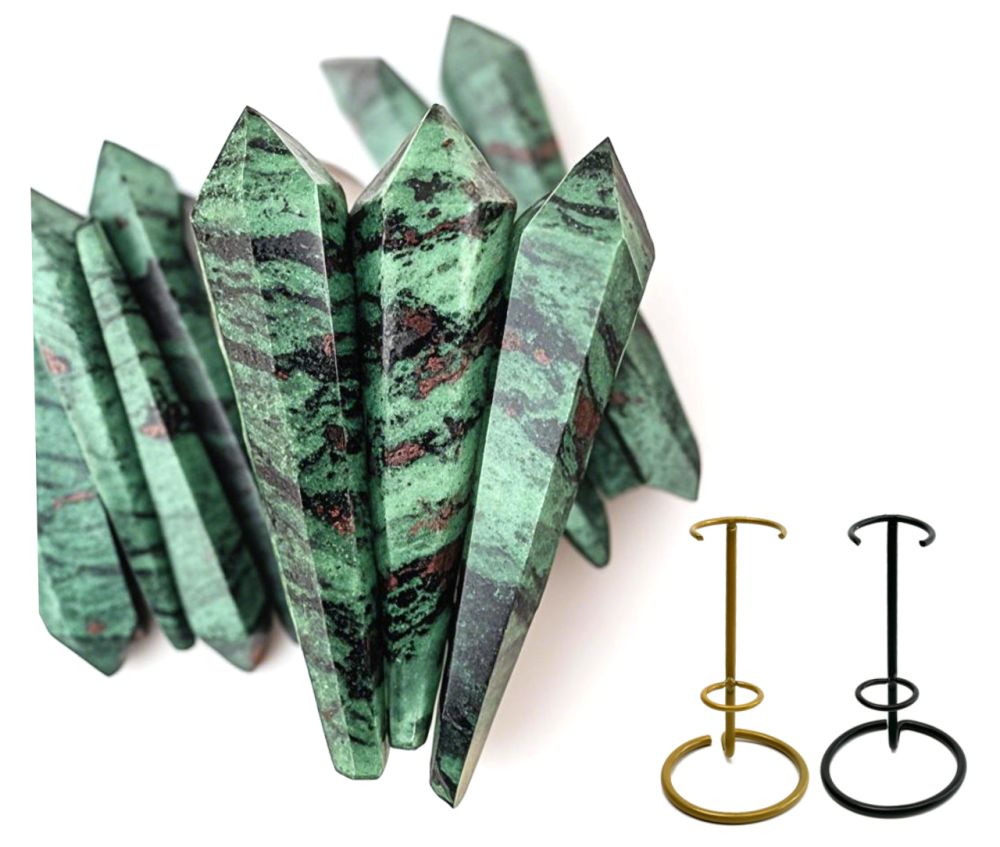We use cookies to make your experience better.
TimmersGems has a new website, existing customers also need to register again.
Epidote points from Pakistan, 10-15 cm in size and sold per kilogram.
Gemstone points have always been a hot item; with our new metal stands in 2 colours they come into their own even better.
Availability:
In stock
SKU
122352
The mineral group epidote consists of a number of sorosilicates, of which the most important is the mineral epidote. The mineral epidote is a calcium-iron-aluminium silicate with the chemical formula Ca2(Fe3+,Al)Al2(SiO4)(Si2O7)O(OH). The yellow to brown-green, grey or black epidote has a glassy lustre, a grey-white stripe colour and the cleavage is perfect according to crystal plane [001]. The crystal system is monoclinic. The average density is 3.45 and the hardness is 7. Epidote is not radioactive. The name epidote is derived from the Greek epidosis, which means "addition". Epidote is a mineral that occurs worldwide very frequently, especially in contact metamorphic rocks. It is formed in crystalline limestone and in schists. Especially in the Knappenwand, at the Großvenediger in the Untersulzbachthal, Salzburg (Austria), beautiful epidote crystals are found. Epidote is common in the sand fraction of Dutch Quaternary river sediments. In the heavy mineral analysis that took place in the Netherlands at the National Geological Service during the second half of the twentieth century, the mineral is classified in the so-called unstable group.
| Dimensions | 10-15 cm |
|---|---|
| Country of Manufacture | Pakistan |












